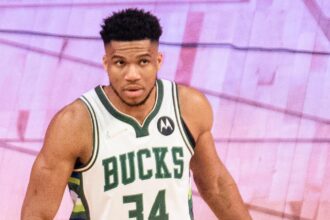In a decisive 121-98 defeat to the Los Angeles Clippers, the Atlanta Hawks failed to find footing on the road, exposing critical issues that could shape the remainder of their season. As the Hawks struggled to keep pace against a dominant Clippers squad, three key takeaways emerged from the lopsided contest-highlighting both the team’s vulnerabilities and areas demanding urgent improvement. This breakdown delves into the pivotal moments and performances that defined Atlanta’s disappointing loss.
Atlanta Hawks Struggle with Defensive Cohesion Against Clippers’ Aggressive Offense
The Hawks’ defensive scheme appeared disjointed from the opening tip, allowing the Clippers to execute their high-tempo offense with relative ease. Key players like Paul George and Kawhi Leonard consistently found seams in the Hawks’ defense, capitalizing on mismatches and forcing rotations that left other players wide open. Atlanta’s inability to switch effectively on picks and communicate on rotations exposed vulnerabilities that the Clippers exploited to maintain a steady scoring run throughout the game.
Notable defensive breakdowns included:
- Failure to contest perimeter shots, leading to multiple three-point attempts around the arc.
- Slow closeouts on cutters resulting in easy layups and second-chance points.
- Lack of synchronized effort on ball screens, allowing excessive penetration into the paint.
| Defensive Metric | Hawks | Clippers |
|---|---|---|
| Defensive Rebounds | 32 | 38 |
| Opponent FG% | 48.5% | 54.2% |
| Turnovers Forced | 7 | 15 |
Overall, the Hawks’ defensive lapses were a critical factor in their steep scoring deficit. Without a cohesive effort on both ends, Atlanta struggled to contain the Clippers’ aggressive offensive sets, highlighting areas that require immediate attention if the Hawks hope to rebound in upcoming matchups.
Key Individual Performances Expose Gaps in Hawks’ Rotation and Depth
The game exposed glaring inadequacies in Atlanta’s rotation, as standout performances from a handful of Hawks revealed the thin margins between effort and efficiency. Trae Young, despite putting up notable numbers, appeared physically taxed, navigating through a compressed rotation that left little room for rest. Meanwhile, Clint Capela offered moments of dominance in the paint but struggled to maintain consistency over extended stretches. This reliance on a few key contributors highlighted the Hawks’ vulnerability when bench players failed to provide meaningful support.
Beyond individual efforts, the data paints a stark picture of the Hawks’ depth issues:
- Bench production: Atlanta’s reserves combined for under 15 points, unable to impact momentum or alleviate starters.
- Defensive breakdowns: Limited rotations led to mismatches and open looks, especially during second-quarter surges by Los Angeles.
- Fatigue factors: Extended minutes for core players resulted in late-game drop-offs in both offensive output and defensive intensity.
| Player | Minutes Played | Points | Plus/Minus |
|---|---|---|---|
| Trae Young | 38 | 26 | -12 |
| Clint Capela | 34 | 18 | -8 |
| De’Andre Hunter | 25 | 10 | -6 |
| Bench Group | 35 (combined) | 14 (combined) | -20 (combined) |
Adjustments Needed in Hawks’ Offensive Strategy to Overcome Defensive Pressure
The Hawks struggled to find fluidity on offense against the Clippers’ relentless defensive pressure, often appearing stagnant and predictable. To counteract this, Atlanta needs to emphasize quicker ball movement and more off-ball screens to create separation and open looks. The team’s reliance on isolation plays allowed the Clippers to set up traps and clog driving lanes, leading to contested shots and turnovers. Incorporating more pick-and-roll actions with Trae Young and Dejounte Murray could help diversify their attack and force the defense to make tough choices.
In addition, improving shot selection is critical. Atlanta shot just 36% from the field, largely due to forced attempts during crunch time. Engaging multiple shooters in catch-and-shoot roles, particularly behind the arc, would stretch the defense and generate easier scoring opportunities. Below is a quick overview of key offensive metrics from the game:
| Metric | Hawks | Clippers |
|---|---|---|
| Field Goal % | 36% | 48% |
| Turnovers | 17 | 12 |
| 3P % | 29% | 38% |
| Fast Break Points | 8 | 22 |
Addressing these areas through strategic adjustments will be pivotal if the Hawks want to break free from suffocating defenses and regain offensive momentum moving forward.
Closing Remarks
As the Atlanta Hawks reflect on their 121-98 defeat to the Los Angeles Clippers, these three key takeaways highlight critical areas for improvement moving forward. From defensive lapses to offensive inconsistencies, the loss serves as a stark reminder of the challenges the Hawks must address to remain competitive in a tough Eastern Conference. With adjustments needed on both ends of the court, Atlanta’s upcoming games will be crucial in determining whether the team can regain momentum and climb back into playoff contention.














